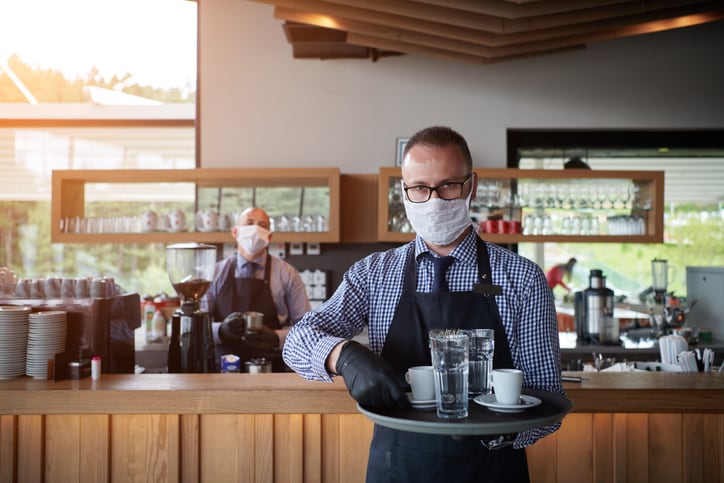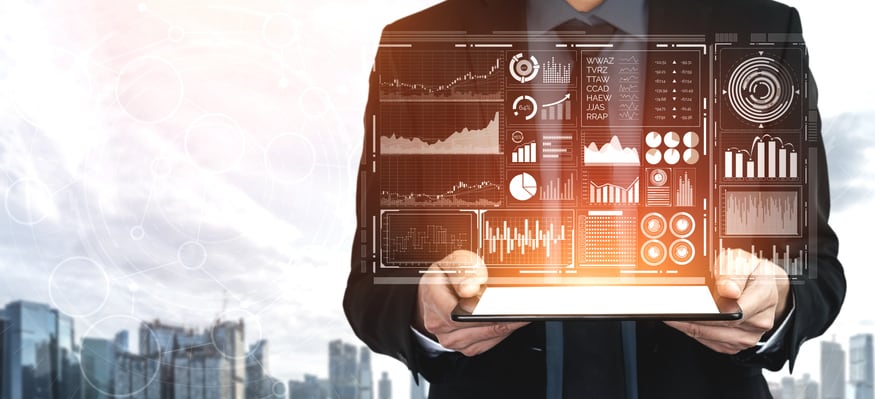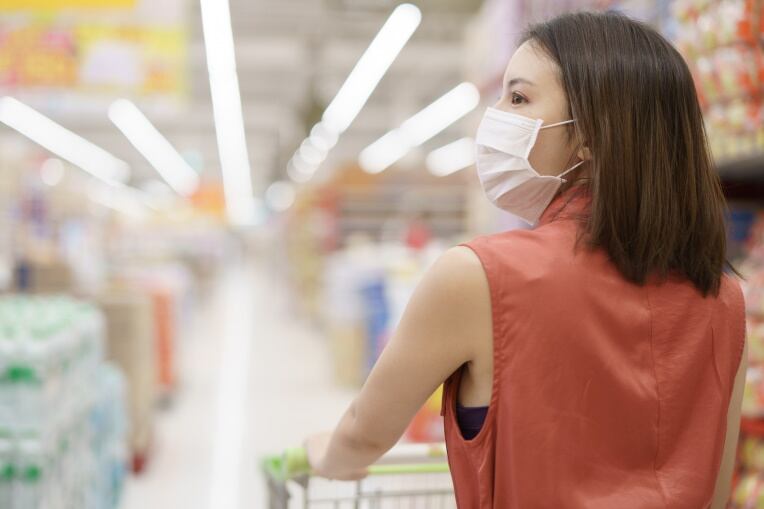Did you really think life would return to normal? English eaters and drinkers have been celebrating a lifting of lockdown restrictions. Restaurants, bars and pubs are now open for outdoor drinking and dining and are preparing to resume indoor service from 17 May.
But there are rules to note. The 10pm curfew will end, but customers must follow either the rule of six, or be in a group of any size as long as there are no more than two households present. When people are not seated – for example, when they go to the toilet, customers must wear a face mask, observe social distancing and follow one-way systems.
There is also anxiety amid the optimism, with many pubs and restaurants deciding to remain shut. According to a survey of over 10,000 people carried out by the nutrition app Lifesum 79% of respondents said they were “looking forward” to dining in a restaurant again, with 40% saying they were “nervous or apprehensive” about eating out. Andrew Zimmermann, a behaviour change expert at Lifesum, said social distancing measures and hygiene practices allow venues to mitigate the risk, before adding, rather ominously, that the hospitality industry can’t “ask customers to ignore their fears”.
A range of new tech has thus emerged in response to consumer unease about the restaurant experience. An app called Billa, for example, has a range of features such as a 3D menu, a ‘call for assistance’ option and ‘speedy payment’ function designed to limit the contact people have with others during the dining experience. The app includes ‘head chef recommendations’ and ‘smart meal pairings’ from the restaurant, aimed at helping guests create the perfect meal and ‘encouraging customers to broaden their culinary horizons’. It also gives users access to restaurant deals, loyalty rewards and incentives.
Another app is from Ubamarket, which makes ‘scan pay go’ technology for supermarkets. Its latest app called NOMM is designed for ‘the new normal in hospitality’. This also offers contactless payment, interactive menus and facial recognition (which helps for age verification for alcohol and restricted items) to ensure that fears of contact with others are minimised. A handy benefit of the app for venues is an API cloud-based software that is linked to the POS system, meaning that any changes made to the menus in the restaurant are updated to the app in real time.
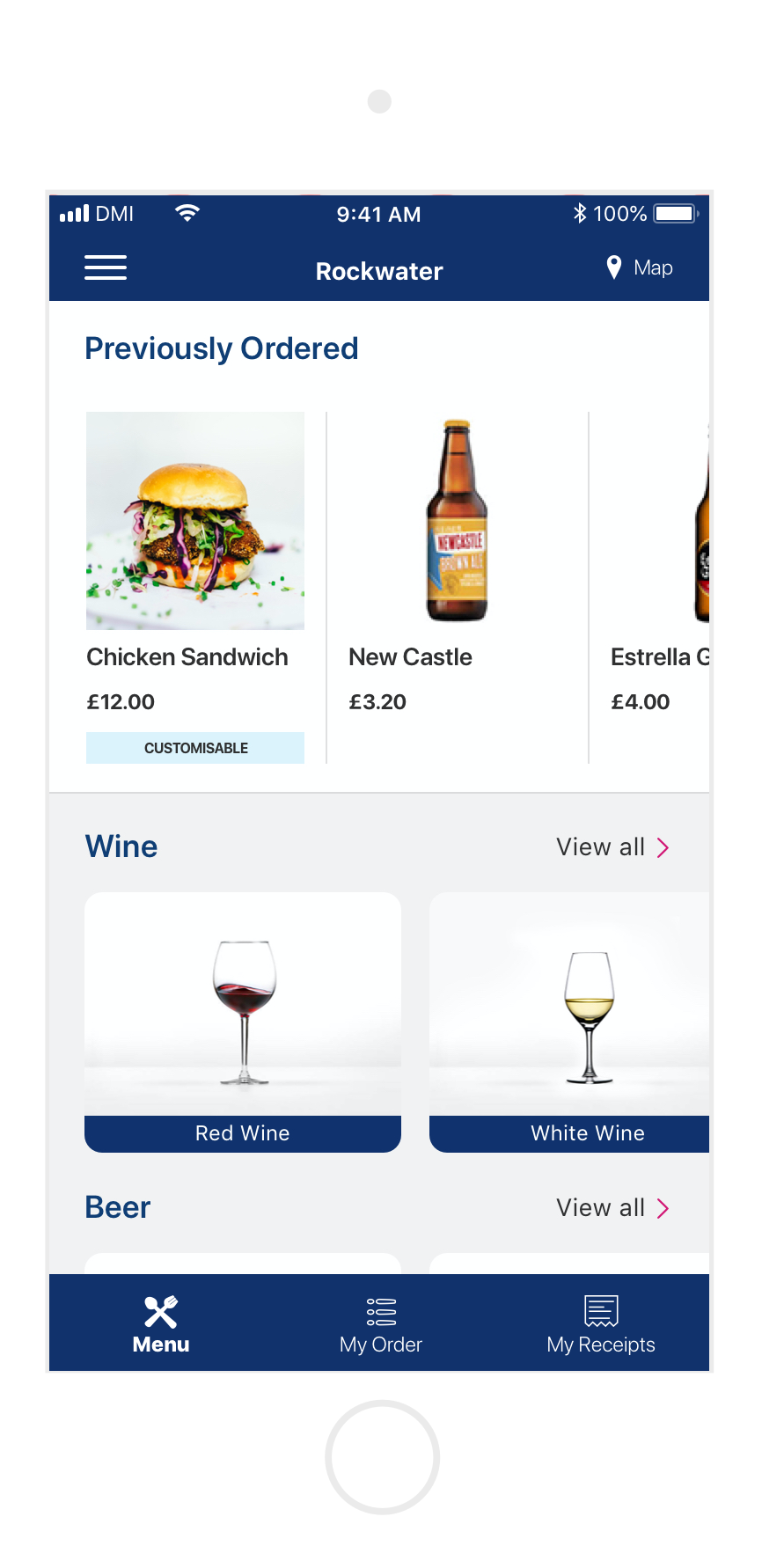
UV cleaning robots, ‘virtual customers’ and vending machines
Restaurants and pubs will continue to employ technology to ensure socially distanced service that will make diners feel more comfortable, believes James Walton, chief economist at IGD. “Self-serve kiosks, virtual menus, more outside spaces, more ventilation will all increase where operators can afford to invest in them,” he told FoodNavigator.
IGD’s field research, meanwhile, has discovered an array of ideas on trial around the world, he told us, which would have bewildered the pre-COVID world. These include UV cleaning robots in a Central Food Hall in Thailand and ‘virtual diner’ dummies occupying seats to force distancing at a Group Exito restaurant in Colombia. Closer to home in Europe, safety concerns have led to vending solutions becoming more acceptable. Take Pizza Bella in Bedminster: Britain's first pizza vending machine.
All this, said Walton, continues a tech trend that began pre-COVID as restaurants sought to increase output and efficiency. For years, he explained, foodservice businesses in many markets have struggled to grow productivity. Many foodservice offers are labour-intensive and jobs are hard to automate. The problem is aggravated where labour costs are rising.
“We saw tech being applied to certain aspects of the offer before COVID hit. Ordering is the obvious place, such as ordering screens in McDonalds, bespoke apps and platforms like Just Eat. COVID has naturally accelerated this trend, but it is only a partial solution,” Walton said. “We have also seen experiments with using robotics such as drones to fulfil orders but applying tech in kitchens is still tricky.”
There have been some experiments in automating cooking, he noted, such as the salad-making robot called Sally and Itsu’s sushi-making robots, but “a truly flexible, versatile and affordable robot cook is still some way off”.
It’s the data, stupid
Technological advancements clearly offer consumers a potential solution to their fears about hygiene and social distancing. The big opportunity on offer for the hospitality industry and food brands is the customer data that is gathered via tech such as ordering apps, observed Walton.
Many quick service restaurants, coffee shops and food-to-go outlets such as McDonalds, KFC, and Costa are pushing customers to order via apps using special promotions as an incentive, for example, he told us. Similarly, digital subscriptions (on offer at the likes of Leon, Pret and Pure) for coffee and food also generates customer data.
“The challenge for operators is what to do with the data and how to bring data from all channels together to give one view of the customer and deliver a consistent brand experience to them, however they engage either in person, delivery, click and collect, drive thru or retail,” Walton revealed.
Developing data for insight may be a new experience for some foodservice operators, he added. “Digital operations allow them to develop large bodies of data. But how will restaurants use the data to optimize operations? For example, can they predict future demand? Can they use data to keep diners loyal? Data is the key – gathering it and using it could give operators a clear advantage over competitors. The investments in tech companies made by QSR’s recently emphasise how important they believe technology to be.”
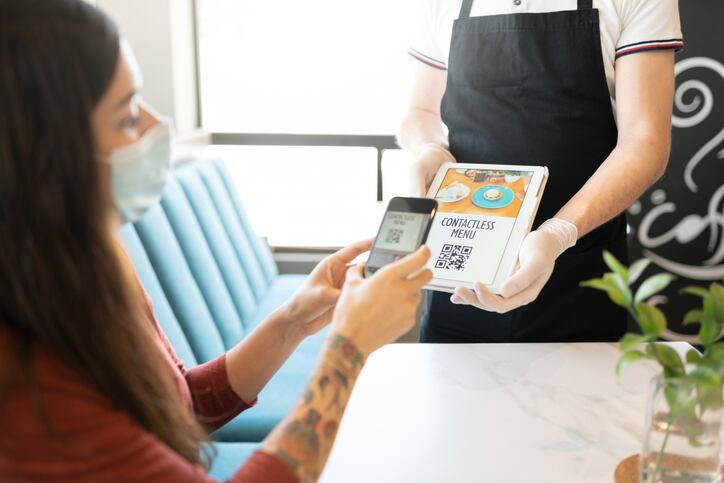
Why restaurant goers will have higher expectations after COVID
Another challenge facing restaurants as restrictions lift is how to tempt back customers who have amassed better cooking skills in their own kitchens and saved money cooking at home, added Walton. “Retailers will be trying to keep them cooking at home with new meal solutions,” he explained. “Restaurants must make the extra cost of eating out worthwhile, so experience is even more important than ever.”
The hospitality industry must therefore think carefully about where technology can improve customer experience and avoid it where it detracts from this.
For example, some brands and formats may benefit more from digital customer engagement than others, said Walton. “Table ordering has proved popular with Wetherspoons customers but would not work as well in fine dining where a more personalised service is expected.”
Food operators may also use customer data to personalise offers or menus, “which could also be seen as a positive by customers if done well”, according to Walton.
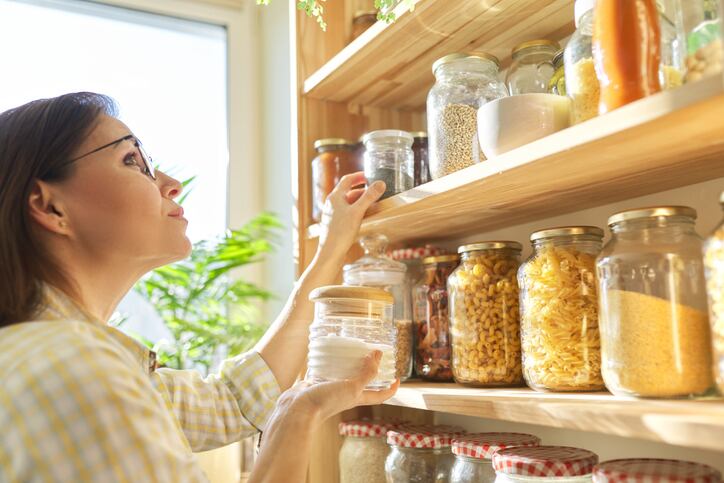
Tech allows small businesses to act big
The real game-changer for restaurants is platforms for ordering and fulfilment, he added. These allow small businesses access to shared, standardised technical facilities, at a low (or manageable) cost. “In other words, platforms allow small businesses to act like big chains.
“Front-of-house tech has to enhance the customer experience to be of value i.e. making it quicker, safer, more efficient etc. Some functional activities such as ordering and payment could switch to digital quite easily but to add value to the customer experience, new processes or roles will need to be introduced.”
Layouts and processes in pubs, cafes and restaurants are therefore needing to adapt to cater for the accelerated use of technology by customers, he noted. Restaurants are being redesigned with separate entrances/hatches for delivery orders so the influx of drivers at peak times does not interfere with restaurant ambiance, for example.
“We can already see the impact of technical and social change on foodservice sites and a new generation of formats is emerging. These are optimized for “omnichannel” foodservices, combining real-world and digital interactions. They are often small, with few staff, allowing use of sites that would not otherwise be efficient.”
The use of ordering apps, he added, is likely to be a long-term trend and the pandemic has massively accelerated acceptance and usage. “A key change we have seen during Covid is adoption of apps by older users – we see this in online food retail,” he said. However, such systems face common challenges i.e. data security and quality of user experience.”
“In general customers will be much more open to using technology than pre-Covid so there is a window of opportunity to introduce systems that benefit the operators in terms of efficiency and data and customers in terms of safety and convenience.”


